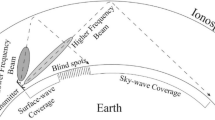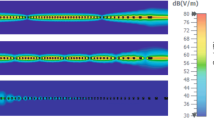Abstract
WHILE studying the field-strength variations at Waltair of transmissions from certain broadcasting stations of the All-India Radio, a peculiar type of rapid fading, which does not appear to have been reported so far, was observed during the summer months on the 41- and 60-metre bands. The phenomenon may briefly be described as the apparent existence on the carrier, at the receiving end, of a permanent modulation of 2–3 cycles per second. When the programme is on, there is superposed on it a variation in intensity at frequencies ranging between 2 to 3 cycles per second. This gives the impression of a quivering or fluttering of the transmission. This phenomenon is therefore referred to here as the 'flutter phenomenon'. The effect produced in the loud-speaker by the'flutter' is somewhat similar to the beating of two notes of nearly the same frequency. When the quasi-frequency of the 'flutter' becomes large, it produces a most annoying effect, and listening to a programme becomes almost impossible. The effect is further accentuated by occasional large amplitude of the 'flutter'.
Similar content being viewed by others
Article PDF
References
Eckersley, T. L., Nature, 143, 33 (1939).
Menzel, Beckmann and Vibig, T.F.T., 28, 130 (1939).
Appleton and Beynon, Proc. Phys. Soc., 59, 72 (1947).
Wells, Watts and George, Phys. Rev., 69, 540 (1946).
Author information
Authors and Affiliations
Rights and permissions
About this article
Cite this article
SUBBA RAO, N., SOMAYAJULU, Y. A Peculiar Type of Rapid Fading in Radio Reception. Nature 163, 442 (1949). https://doi.org/10.1038/163442a0
Issue date:
DOI: https://doi.org/10.1038/163442a0
This article is cited by
-
VHF scintillations as a diagnostic tool for the study of ionospheric irregularities
Earth, Moon, and Planets (1994)
-
The influence of weather conditions on long distance short wave transmission
Proceedings of the Indian Academy of Sciences - Section A (1950)



